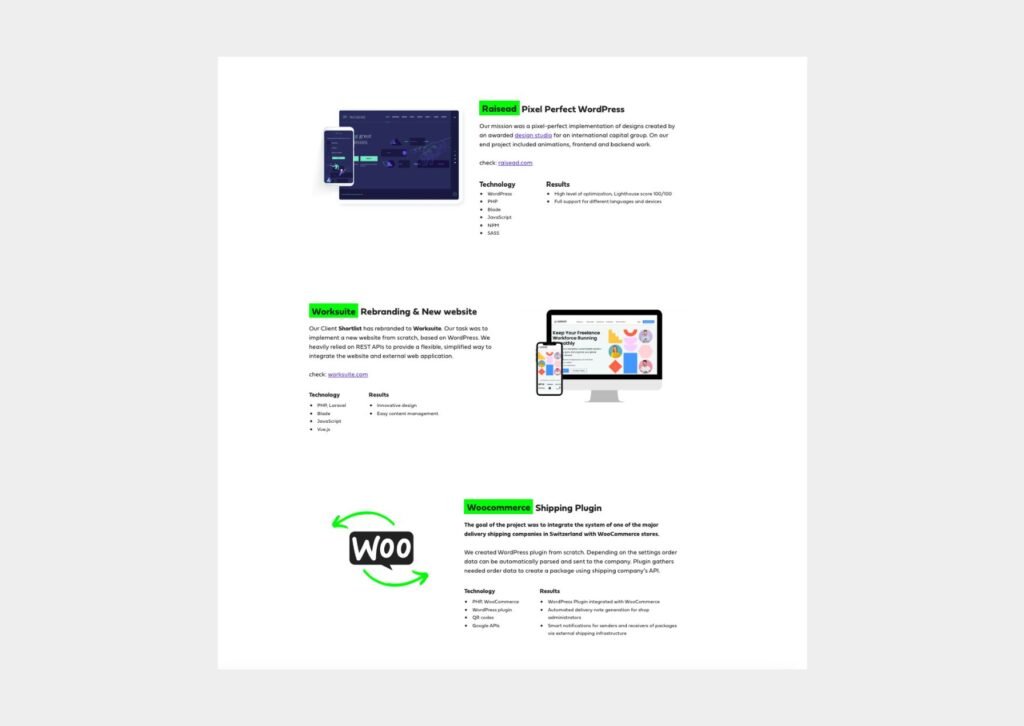As a web developer, your portfolio is the most essential tool in showing off your creativity. It reflects your technical and aesthetic skills. It also allows potential employers and clients to evaluate your work.
In this article, we will discuss what a design portfolio is, the benefits of having a portfolio, and tips for creating an effective portfolio website.
What is a project portfolio?
A design portfolio is a collection of work samples that demonstrate your skills and experience as a web designer. It serves as proof of your technical and creative capabilities and can range from a single page to multiple pages of content. Your portfolio should include projects that showcase your design style, demonstrate your problem-solving skills, and showcase your expertise.

How to create a portfolio?
Creating a portfolio of web projects can be a daunting task, but with the right tools and resources, it can be a simple and enjoyable process. Here are some tips to help you get started:
- Choose a platform: The first step in creating a portfolio is to decide which platform you will use to host your website.
- Define your target audience: You should also identify who your target audience is and tailor your portfolio to them. This will help you ensure that the content you post is relevant.
- Develop the design: Once you have identified your target audience, you can start developing the design of your portfolio. Think about the type of content you’ll be posting and the overall aesthetic you want to create.
- Collect content: Gather content for your portfolio by collecting relevant work samples and writing descriptions for each project. You should also include information about yourself and your work experience.
- Test and publish: When your portfolio is ready, be sure to test it on multiple devices and browsers to make sure it looks and works as expected. Once you’re happy with the results, you can publish your portfolio and start showcasing your work.
Best practices for presenting your portfolio
Once you’ve created your portfolio, you should take the time to present it in the best possible way. Here are some best practices for portfolio presentation:
- Use a professional tone: Make sure you use a professional tone in all your content.
- Be concise: Focus on emphasizing key points rather than giving a lot of unnecessary details.
- Use clear and concise language: Keep your language clear and concise so that potential employers and clients can easily understand your content.
- Highlight strengths: Focus on highlighting your strengths and projects that best showcase your skills and experience.
- Be honest: Be honest about your skills and completed projects.
Let’s Build Something Great
Ready to discuss your project or potential partnership?

